
The Basics Of Murraya
Murraya is a genus of evergreen shrubs and small trees that is native to Asia and Australasia. The most well-known species is Murraya paniculata, also known as orange jessamine or Chinese box. This species is native to China, Taiwan and the Philippines, but it has been introduced to many other parts of the world, including the tropical and subtropical regions of Africa, Asia, Australia and the Americas.
There are a total of 11 species in the Murraya genus, all of which are known for their fragrant, white or pale pink flowers. These flowers are typically followed by small, edible berries that range in colour from red to black. The leaves of Murraya species are glossy and dark green, and they are often used in traditional medicine to treat a variety of ailments.
One of the most interesting facts about Murraya is its traditional use in Chinese medicine. The leaves of the Chinese box are used to treat a variety of ailments, including fever, coughs, and sore throats. The leaves are also used to make a tea that is said to have a calming effect on the mind and body. Additionally, the fruit of the Chinese box is used to make a sweet jam, and it is also used in traditional Chinese cooking.
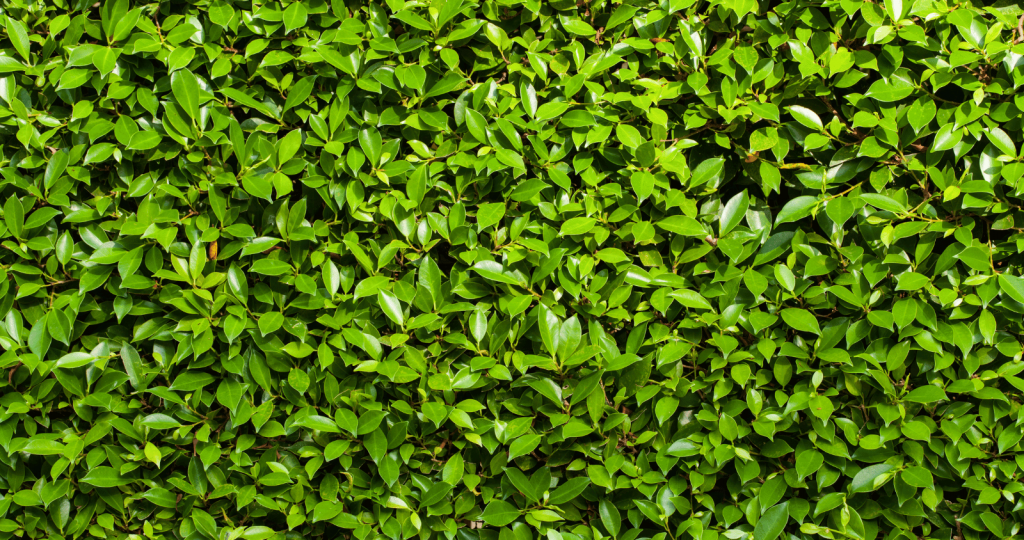
Murraya is most often used as a hedge plant. Due to its glossy leaves and small, compact habit, it is often used as a hedge plant in gardens and parks. They can also be trained to be grown as a small tree or topiary.
In cultivation, Murraya species prefer a warm, humid climate and well-drained soil. They are relatively easy to care for, but they do require regular pruning to keep them shapely and promote healthy growth. They are also sensitive to frost and must be protected from freezing temperatures.
In conclusion, Murraya is a genus of evergreen shrubs and small trees that is native to Asia and Australasia. There are a total of 11 species in the genus, all of which are known for their fragrant, white or pale pink flowers, glossy and dark green leaves, and small, edible berries. They are used for traditional medicine, and also as hedge plants or topiary. They prefer warm and humid climate, and regular pruning is recommended for optimal growth.
Three great options for your garden
Murraya paniculata
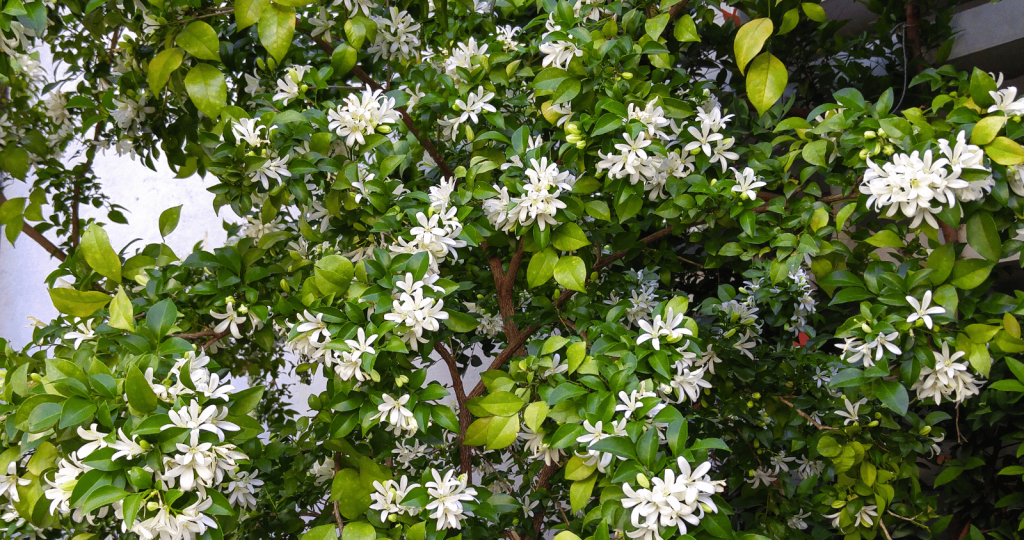
Murraya paniculata, also known as orange jessamine or Chinese box, is a small evergreen tree or large shrub that can reach heights of up to 3m. It is native to China, Taiwan, and the Philippines, but it has been introduced to many other parts of the world, including Australia.
The tree has glossy, dark green leaves that are pinnately compound with small leaflets. The leaves are fragrant when crushed. It produces clusters of small, white, fragrant flowers that bloom in spring and summer, followed by small, edible red berries.
Murraya paniculata thrives in a warm, humid climate and well-drained soil. It prefers full sun to partial shade and can tolerate a wide range of soil types. It is relatively drought-tolerant once established, but regular watering during dry spells will help to maintain its lush, green foliage. It is also sensitive to frost and must be protected from freezing temperatures.
In cultivation, Murraya paniculata is often used as a hedge plant or topiary, due to its glossy leaves and small, compact habit. It requires regular pruning to keep it shapely and promote healthy growth. They also respond well to fertilization, and it is recommended to use a balanced fertilizer every 3-4 weeks during the growing season.
Overall, Murraya paniculata is a hardy plant that is easy to care for, making it a popular choice for gardens and parks. Its glossy leaves and fragrant flowers make it an attractive addition to any landscape, and it is also versatile, being able to be grown as a small tree, hedge, or topiary. With proper care and conditions, it can thrive and add beauty to your garden.
For more information about this plant, click here.
Murraya Sweet Privacy
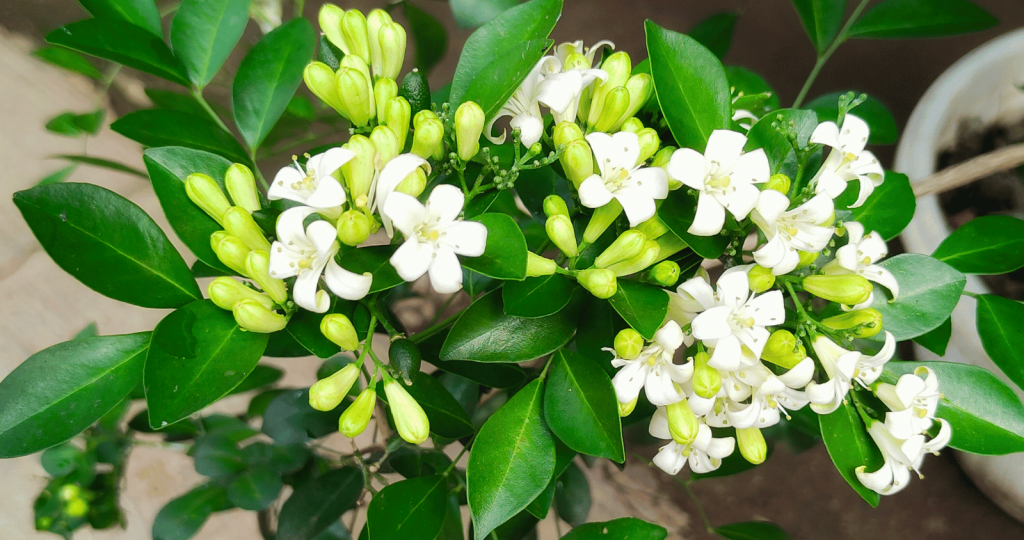
Murraya Sweet Privacy is a fast-growing, evergreen shrub that can reach a height and width of up to 2.5m and a width of 1.5m making it an attractive choice for gardeners looking for a privacy hedge or screen.
This cultivar is known for its sweet fragrance, which is similar to that of the Orange blossom, and for its dense, dark green foliage. The small, white, star-shaped flowers appear in clusters in the spring and summer, making it an attractive addition to any garden.
Murraya Sweet Privacy is easy to care for and prefers well-draining soil, a sunny to partially shaded location, and moderate to regular watering. It is drought-tolerant once established, but regular watering will encourage more vigorous growth.
This cultivar is also relatively low-maintenance, making it an attractive choice for gardeners looking for a quick, easy way to create a lush, fragrant hedge or screen. It can be easily pruned to shape, and it responds well to pruning, making it a good option for those who want to keep it in a neat, tidy form. For more information about this plant, click here.
Murraya Min-A-Min
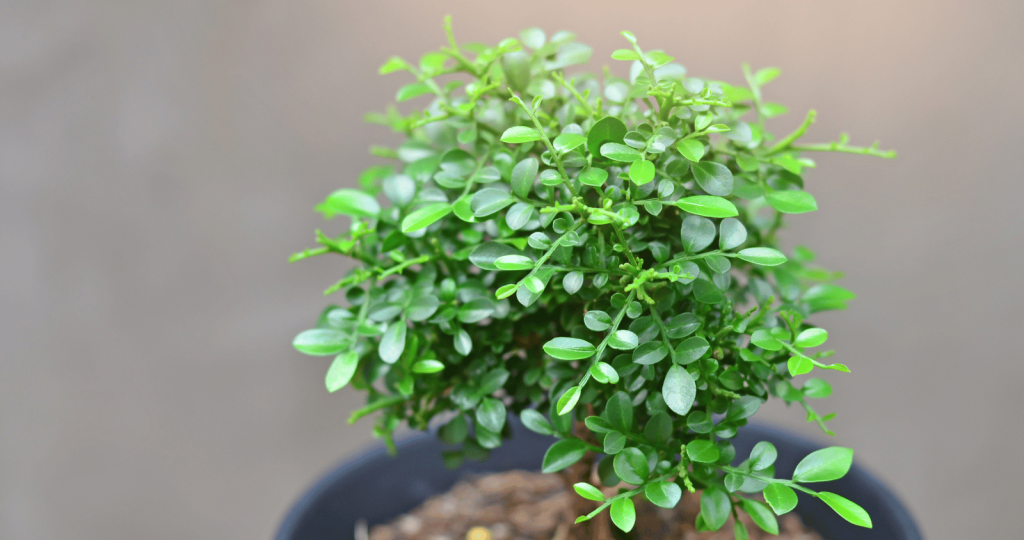
Murraya “Min-a-Min” is a charming and low-growing evergreen variety that’s perfect for small gardens or creating compact hedges. This plant responds well to clipping, making it a popular alternative to Japanese box, which has long been used for creating small hedges. With its cute and compact form, bright green foliage, and fragrant white flowers that bloom from spring to summer,
Murraya Min-A-Min is a beloved plant all around. Whether used for hedging, in containers, or in patio settings, its dense and small shape is sure to impress. This hardy plant thrives in full sun or light shade, and regular mulching and watering will help it establish itself. Pruning may be necessary, and a slow-release fertilizer should be applied in the spring. Murraya Min-A-Min can grow up to 1 meter high and wide. For more information about this plant, click here.
Are Murraya considered drought tolerant?
Yes, Murraya plants are generally considered to be relatively drought-tolerant once established. However, they still benefit from consistent watering, especially during extended periods of hot or dry weather.
Regular watering helps keep the soil moist and prevent the leaves from wilting, which can lead to leaf drop and stress. Additionally, mulching the soil around the plant can help retain moisture and regulate soil temperature.
How much water do Murraya need each week?
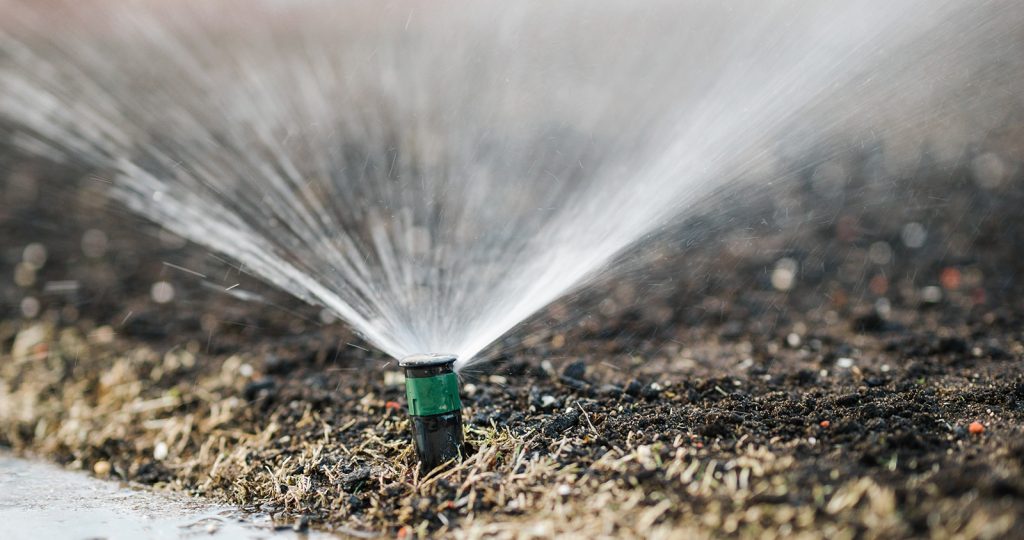
20mm of water per week during late spring to early autumn is a good rule of thumb. However, the exact amount of water needed will depend on factors such as the climate, soil type, and size of the plant, as well as the time of year.
During the hot summer months, when the plant is actively growing and transpiring, it is likely to need more water than during the cooler months when growth slows down.
However, it is important to note that over-watering can also be harmful to Murraya paniculata, as the roots can become waterlogged and suffocated, leading to root rot. So, it’s important to make sure that the soil is well-draining and that you don’t leave the plant standing in water.
It’s also important to note that watering early in the day is recommended to avoid fungal issues, as the leaves have time to dry before evening.
How often should Murraya be pruned?
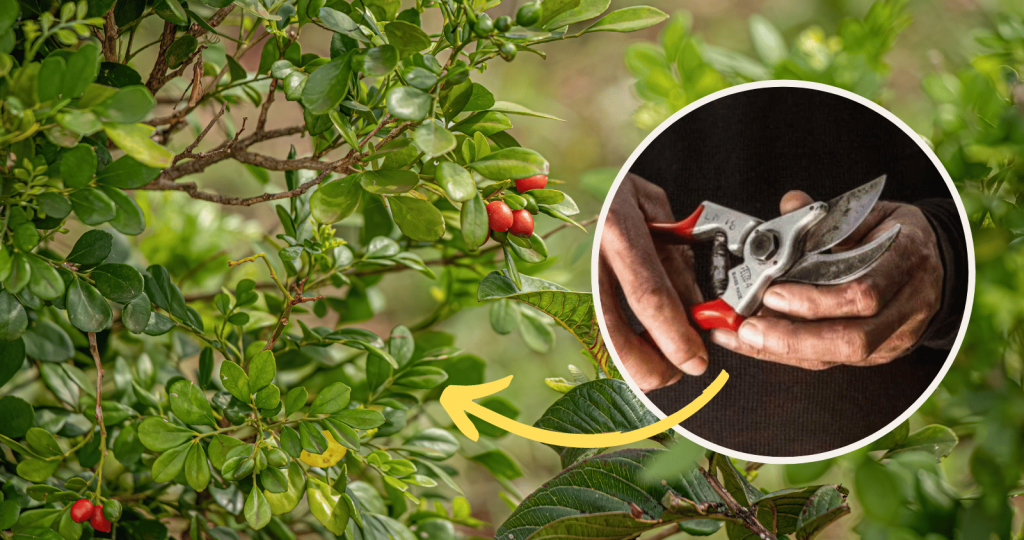
Murraya need to be pruned regularly to maintain their shape and promote healthy growth. The frequency of pruning will depend on the size and growth habit of the plant, as well as the desired shape and size.
For hedges and topiary, Murraya paniculata will typically need to be pruned every 4-6 weeks during the growing season to keep it compact and shapely. For larger plants, and more informal hedges or screens pruning can be done less frequently, such as every 3-6 months.
If the plant has been left untrimmed for a long period, a more drastic pruning may be necessary. In that case, it is advisable to prune only a third of the plant at a time, over a period of 3-4 years, in order to avoid stress on the plant. Should you accidentally over-trim your Murraya or something similar, this product helps the plant become more resilient to stress.
It’s important to use sharp, clean pruning shears to make neat cuts and avoid crushing the stem. Also, pruning during the dormant season, usually winter, is recommended to avoid stress on the plant and reduce the risk of disease. (If you are looking for some really good shears, here are two great options depending on your budget: option 1 and option 2.)
Overall, regular pruning is important for keeping Murraya paniculata healthy and looking its best. With proper care and pruning, the plant will maintain its shape and size, and the foliage will remain lush and green.

When is the best time to prune Murraya?
It depends on what type of pruning you will be doing. Light hedging to maintain a desired shape can be year round as needed. This is because a light trim with sharp equipment will not put the plant under too much stress.
However, if you need to do a harder prune then the best time to prune Murraya is during the dormant season, usually in late winter or early spring, before new growth begins. Pruning during this time will help to avoid stress on the plant and reduce the risk of disease.
The dormant season is the time when the plant has stopped growing and has less sap flow, making it less susceptible to disease and pests. It also allows for easy identification of dead or damaged wood, which can be removed before the new growth begins.
It’s important to use sharp, clean pruning shears to make neat cuts and avoid crushing the stem. If the plant has been left untrimmed for a long period, a more drastic pruning may be necessary. In that case, it is advisable to prune only a third of the plant at a time, over a period of 3-4 years, in order to avoid stress on the plant.
How far back can I cut back my Murraya?

Murraya can handle hard pruning, they come back very well. However, as mentioned above it’s important to be mindful of the time of year that you are pruning, as cutting back Murraya during certain seasons can cause stress to the plant. You also need to make sure that the plant has no obvious signs of disease or other stresses.
When pruning Murraya, you should make sure to remove any dead, diseased, or damaged wood, as well as any branches that are crossing or rubbing against each other. This will help to promote good air circulation and prevent disease.
When cutting back your Murraya, you should also keep in mind that it is a fast-growing plant, so it will quickly recover from pruning and will need regular maintenance to keep it in shape.
What type of pests are common with Murraya?

Murraya paniculata is relatively resistant to pests, but it can still be susceptible to a few common issues. Some of the common pests that can affect Murraya include:
- Spider mites: These tiny pests can cause discoloration and mottling of the leaves, and they can be difficult to spot with the naked eye. Spider mites are usually controlled by spraying the plant with water or a solution of water and dish soap.
- Root-knot nematodes: These are parasitic worms that can cause significant damage to plants, including Murraya. These nematodes invade the roots of plants, causing galls or knots to form that disrupt the normal functioning of the roots. This can result in stunted growth, yellowing leaves, wilting or even death in some circumstances.
- Scale insects: Scale insects can cause yellowing and wilting of the leaves, and they can be controlled with a solution of water and insecticidal soap.
- Aphids: These small, soft-bodied insects can cause distorted growth and a sticky residue on the leaves. They can be controlled with a solution of water and insecticidal soap.
- Mealybugs: These small, white, cottony pests can cause wilting and yellowing of the leaves, and they can be controlled with a solution of water and insecticidal soap.
- Whiteflies: These small, white, flying pests can cause distorted growth and yellowing of the leaves. Whiteflies can be controlled with a solution of water and insecticidal soap or with insecticidal oil.
It’s important to keep an eye out for these pests and address them promptly to avoid severe damage to the plant. Also, it is important to use the right type of insecticide, especially if the plants are grown for fruits or herbs.
It’s also a good idea to keep the plant healthy by providing it with the right amount of light, water and nutrients, as healthy plants are less likely to fall victim to pests.

What diseases are common with Murraya?
Murraya paniculata, also known as orange jessamine or Chinese box, is generally considered to be a relatively disease-resistant plant. However, like all plants, it can still be susceptible to a few common issues.
One of the biggest concerns is overwatering. Excessive moisture in the soil can hinder oxygen uptake by the roots and ultimately lead to the death of your plants. Yellowing and falling leaves may indicate that you’re providing too much water. Overwatering can also cause root and crown rot, which can be fatal if not addressed. To avoid this, it’s important to ensure proper drainage, and to adjust your watering habits if necessary.
In addition to overwatering, yellow leaves may indicate a lack of nutrients, particularly sulfur or nitrogen. Applying a fertilizer that contains Sulphate of Ammonia can help address this issue. Good mulching practices can also improve soil nutrition and promote healthy plant growth in the long term.
Lastly, yellowing leaves can be a sign that your climate may not be suitable for these warmth-loving plants. If this is the case, consider finding a different location or variety of Murraya that will better thrive in your area.
What fertiliser is best for Murraya? And how often should you fertilise?
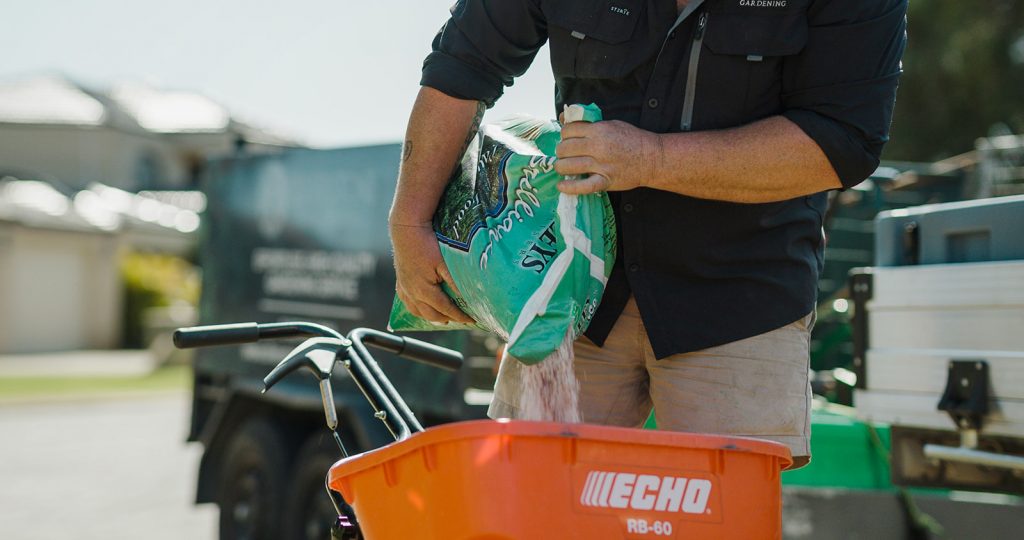
To maintain a strong, healthy plant a balanced, all-purpose fertiliser is the best option for Murraya. A fertilizer with a mix of nitrogen, phosphorus, and potassium, that also includes small amounts of micronutrients such as iron, magnesium, and manganese will do wonders for a Murraya hedge. Slow release fertilisers can last 2 months, 3 months, 6 months or even 12 months depending on the brand. Read the manufacturers recommendations to know how frequently to apply the fertiliser you have chosen.
Avoid over-fertilizing, as this can lead to leaf burn and other issues. Always follow the manufacturer’s instructions when applying fertilizer to your Murraya.

How do you apply fertiliser to a Murraya?
To apply slow-release granular fertilisers or Sulphate of Ammonia simply spread the recommended amount of fertiliser (see manufacturers instructions) to the soil around the dripline of the plant. Some fertilisers may need to be lightly dug in but most will simply need to be watered in to get the fertiliser down to the roots.
How quickly do Murraya grow ?

Murraya paniculata, also known as orange jessamine or Chinese box, is a relatively fast-growing plant. Under ideal conditions, it can grow quickly and can reach its mature size in a few years. The growth rate will depend on factors such as the plant’s age, the growing conditions, and the variety of Murraya.
In ideal conditions, a larger Murraya like ‘Sweet Privacy’ can grow around 70-100cm wide in one year, dwarf variety like ‘Min-a-Min’ will grow around 20-30cm a year.
However, growth rate can also depend on the environment. For example, if the plant is grown in a container, it may grow more slowly than if it is grown in the ground. Additionally, if the plant is grown in a shady location, it may grow more slowly than if it is grown in full sun.
Also, the growth rate of the Murraya can be slowed down by certain factors such as lack of water or nutrients, pests or diseases, and pruning.
How can I make my Murraya grow faster?
There are a few ways you can help your Murraya grow faster:
- Water regularly: Murraya likes well-drained soil and should be watered regularly, especially during hot and dry weather. However, make sure not to over-water, as this can lead to root rot an other issues, if the soil is dry 3-5cm under the surface then you are good to water again.
- Fertilise regularly: Using Sulphate of Ammonia every 4-6 weeks during the growing season can help encourage faster growth. We have written more extensively about fertilising Murraya earlier in this article so check that out for more information.
Here are a few things that may be hindering your Murrayas growth
- Not enough sunlight: Murraya prefers full sun to partial shade, so make sure it is planted in an area that receives at least 6 hours of sunlight per day.
- Pests and diseases: Keep an eye out for pests such as scale insects, spider mites and mealybugs, and diseases such as powdery mildew, leaf spot and canker. Treat them immediately if you notice any signs of infestation or infection. (Here is an organic fungicide that will help with Powdery Mildew and Black Spot.)
- Poor soil drainage: Murraya prefers well-drained soil, so make sure the soil is not waterlogged.
By providing your Murraya with the right growing conditions, you can help it to grow faster and thrive.
Can Murraya be grown in pots
Yes, Murraya can be grown in pots. It is a popular choice for container gardens, patios, and balconies. When growing Murraya in pots, it is important to choose a container that is large enough to accommodate the plant’s root system and to provide proper drainage. A well-draining potting mix is also important to prevent waterlogging and root rot.
Make sure to water your Murraya regularly and provide adequate light, either full sun or partial shade. Additionally, be mindful of the size of your plant, as potted Murraya will generally be smaller than those grown in the ground, so you may need to prune more frequently to keep the plant compact and healthy. Fertilize regularly during the growing season for best results.
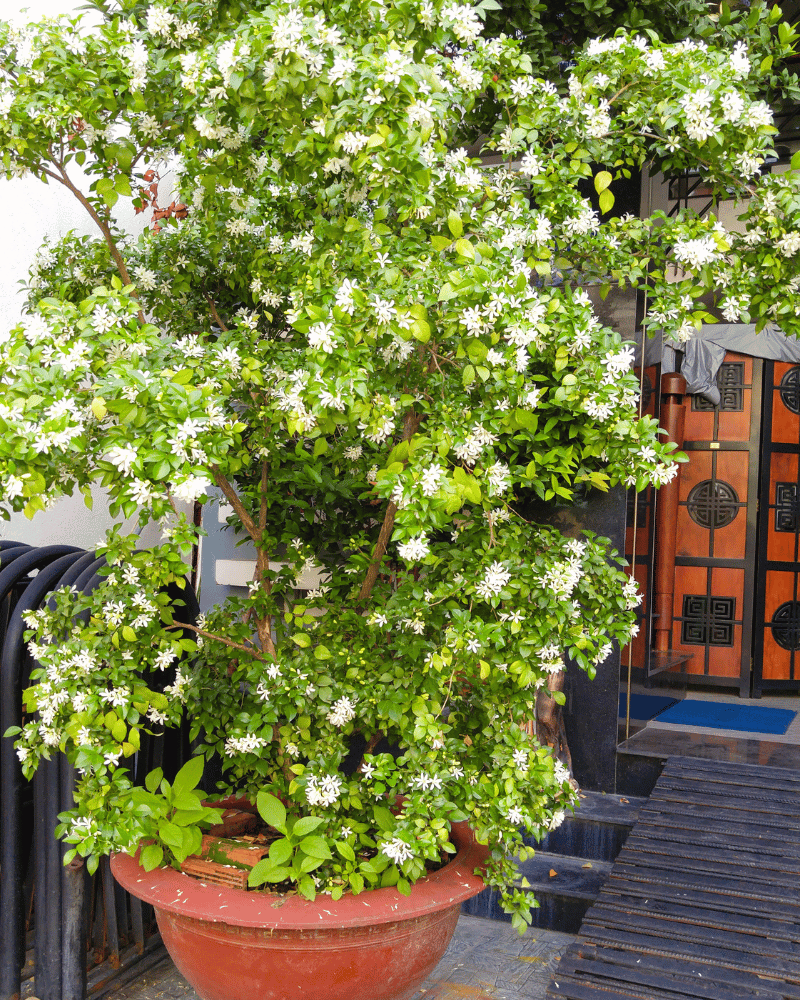
Are Murraya Roots invasive?
Murraya, also known as orange jessamine or Chinese box, is a fast-growing shrub that can reach up to 3-4 meters in height. The roots of Murraya are generally not considered to be invasive. They are usually not aggressive and do not spread far from the base of the plant.
However, in certain conditions, such as in wet soil or if the plant is over-watered, the roots may grow more vigorously and may spread beyond the intended area. It’s also worth mentioning that if planted near a wall or a pavement, the roots may crack or lift them as it grows.
It’s also important to note that when planting Murraya, it’s best to give it enough space to grow so the roots have room to spread out, and not to plant it near any structures or hardscapes that could be damaged by the roots.
Overall, Murraya is not considered to be an invasive species and its roots are not known to cause major problems, but as with any plant, it is important to be aware of its potential growth habits and provide it with the appropriate growing conditions.
Why do Murraya leaves turn yellow?
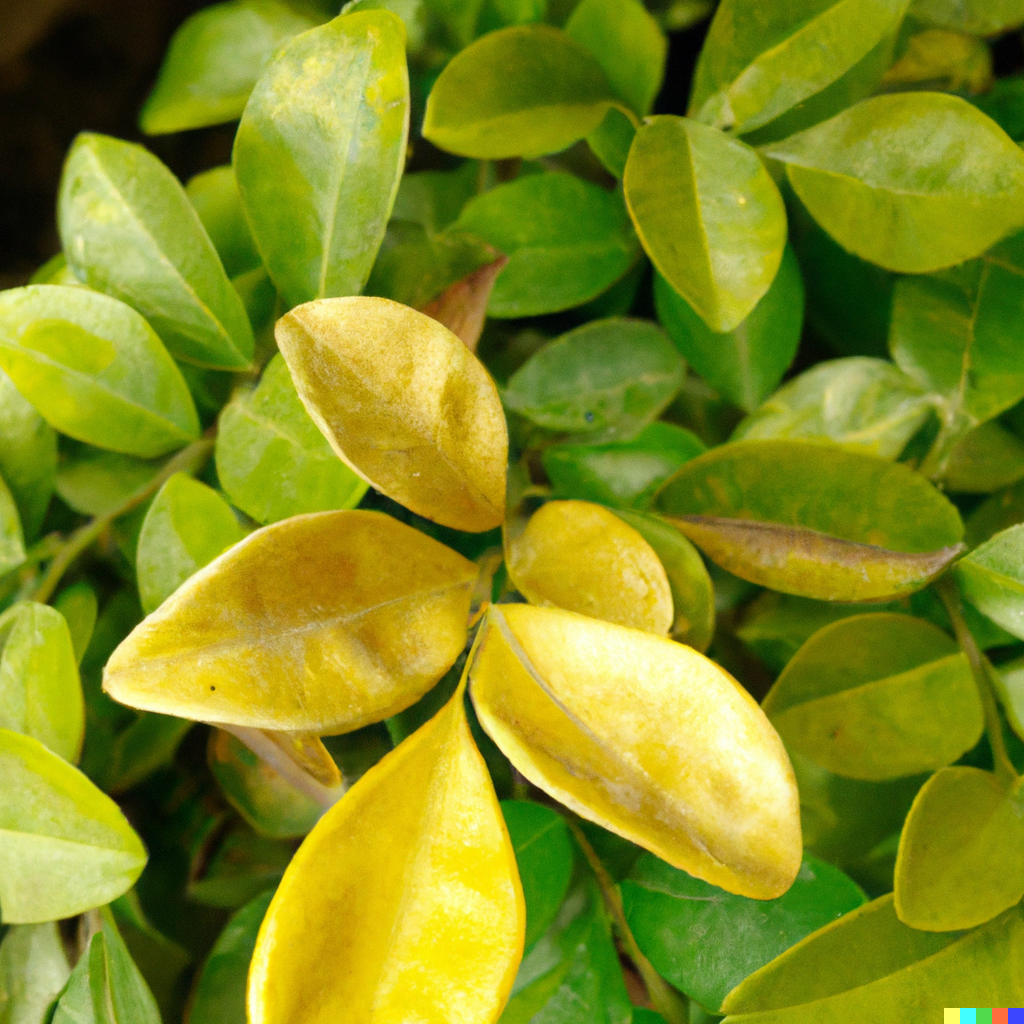
There are several reasons why Murraya leaves may turn yellow:
- Overwatering: When Murraya is overwatered, the soil remains consistently wet, and the roots do not receive enough oxygen. This can cause the leaves to turn yellow and eventually die.
- Underwatering: If Murraya is not watered enough, the leaves will turn yellow and drop off. The plant will wilt and the leaves will lose their bright green color.
- Nutrient deficiency: If the plant is not getting the proper nutrients, the leaves may turn yellow. A common nutrient deficiency in Murraya is iron, which can cause yellowing of the leaves.
- Pests: Pests such as spider mites, mealybugs, and scale insects can cause yellowing of the leaves. They feed on the sap of the plant, causing the leaves to turn yellow and eventually die.
- Disease: Diseases such as powdery mildew, leaf spot, and canker can cause yellowing of the leaves. They are often caused by poor air circulation, high humidity, or a lack of sunlight. (Here is an organic fungicide that will help with Powdery Mildew and Black Spot.)
- Exposure to herbicides: Murraya is sensitive to herbicides, and exposure to them can cause the leaves to turn yellow.
- Not enough sunlight: Murraya need full sun to part shade to thrice, if your Murraya is not getting enough light it will loose it’s leaves and eventually die.
To prevent yellow leaves, make sure to provide your Murraya with the right growing conditions, including proper watering, fertilizing, and pest and disease control. If you suspect a nutrient deficiency, you can have a soil test done to determine which nutrients are lacking and apply the appropriate fertilizer.
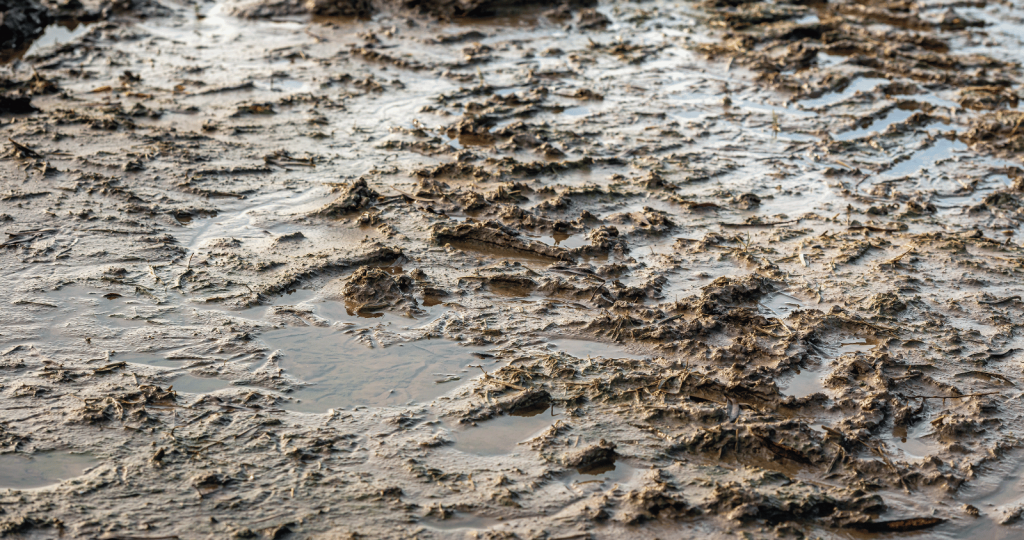
Can Murraya be grown from cuttings?
Yes, Murraya can be grown from cuttings. Growing Murraya from cuttings is a relatively easy and efficient way to propagate the plant. The best time to take cuttings is during the late spring or early summer when the plant is actively growing.
To take cuttings, you should use a sharp, clean pair of pruners or scissors to take a stem cutting that is about 4-6 inches long, with a few leaves at the top. Remove the leaves from the bottom half of the cutting and dip the end of the stem into a rooting hormone gel. We recommend using this rooting hormone to help root formation in your cuttings.
Then, plant the cutting in a well-draining potting mix and place it in a warm, bright location, but out of direct sunlight. You can also cover the pot with a plastic bag to create a greenhouse effect and keep the cutting moist.
Make sure to keep the soil consistently moist, but not soaking wet, by misting the cutting daily or keeping a humidity dome over it.
It can take several weeks to several months for the cutting to root, depending on the variety, the time of year, and the conditions. When the cutting has rooted, you can remove the plastic bag and gradually introduce the cutting to more direct sunlight. Once the cutting has established roots, it can be transplanted into a larger pot or in the ground.
It’s worth mentioning that not all cuttings will root, so it’s a good idea to take more cuttings than you need to ensure that at least some will root.
